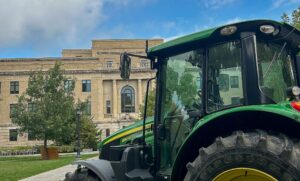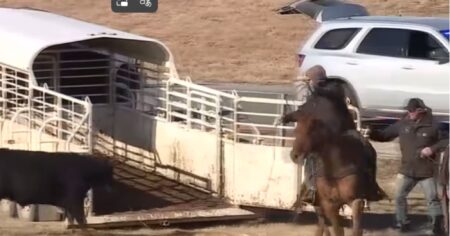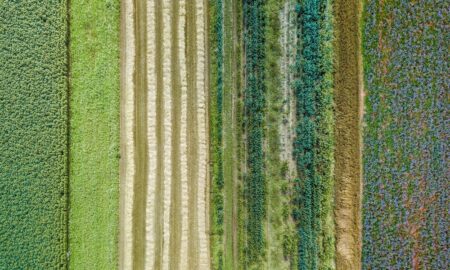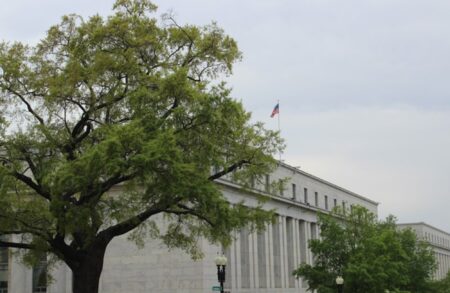By Mónica Cordero
It’s pumpkin season — from spiced lattes to Halloween decorations on the porch — and chances are it was grown in Illinois.
Just over a third of all pumpkins in the United States, 485 million pounds, come from Illinois, according to annual USDA surveys.
Much of that production centers on Morton, a village in Tazewell County that proudly calls itself the “Pumpkin Capital of the World.” About 85% of the world’s canned pumpkin is packed at the Nestlé/Libby’s plant in the middle of town.
Indiana ranks second in production, but Illinois grows roughly three times as many pumpkins, even after its production fell by 30% last year. That decline came even though the harvested acres remained steady; acreage had already dropped by nearly 18% in 2023 compared to the previous year.
Despite their hard exterior, pumpkins are highly susceptible to adverse weather conditions.
Depending on the location, farmers typically begin planting between late May and early July, allowing the pumpkins approximately four months to mature for a fall harvest.
A late spring frost can wipe out young plants before they have a chance to take root. At the same time, extreme summer heat can cause blossoms to fall before they are pollinated, according to a 2024 publication from the National Centers for Environmental Information (NCEI). Excessive rainfall can also delay planting in spring or harvesting in autumn, and leave crops more vulnerable to disease.
According to USDA Economic Research Service data, Illinois not only leads the nation in pumpkin production acreage but also devotes most of its fields to processing varieties, the kind used in pies and canned filling.
Nearly 70% of Illinois’ pumpkin acres are dedicated to pie filling and other processing uses, compared with just 3% in Pennsylvania and even less in Washington, Indiana, and California. This focus helps explain why Illinois outpaces other states in both yield and price.
Other states are catching up, though. In 2024, New York, Wisconsin and Michigan reported the most significant gains, with production increasing by 49%, 43%, and 33%, respectively.
This article first appeared on Investigate Midwest and is republished here under a Creative Commons Attribution-NoDerivatives 4.0 International License.
Iowa Capital Dispatch is part of States Newsroom, a network of news bureaus supported by grants and a coalition of donors as a 501c(3) public charity. Iowa Capital Dispatch maintains editorial independence. Contact Editor Kathie Obradovich for questions: [email protected]. Follow Iowa Capital Dispatch on Facebook and Twitter.









:max_bytes(150000):strip_icc()/soybeans-down-7d23272bd031487b908c22b63639473a.jpeg)

:max_bytes(150000):strip_icc()/MayWheatRainDrops-1-731120a608ab4b9c8576aeff53d5ff5f.jpg)
